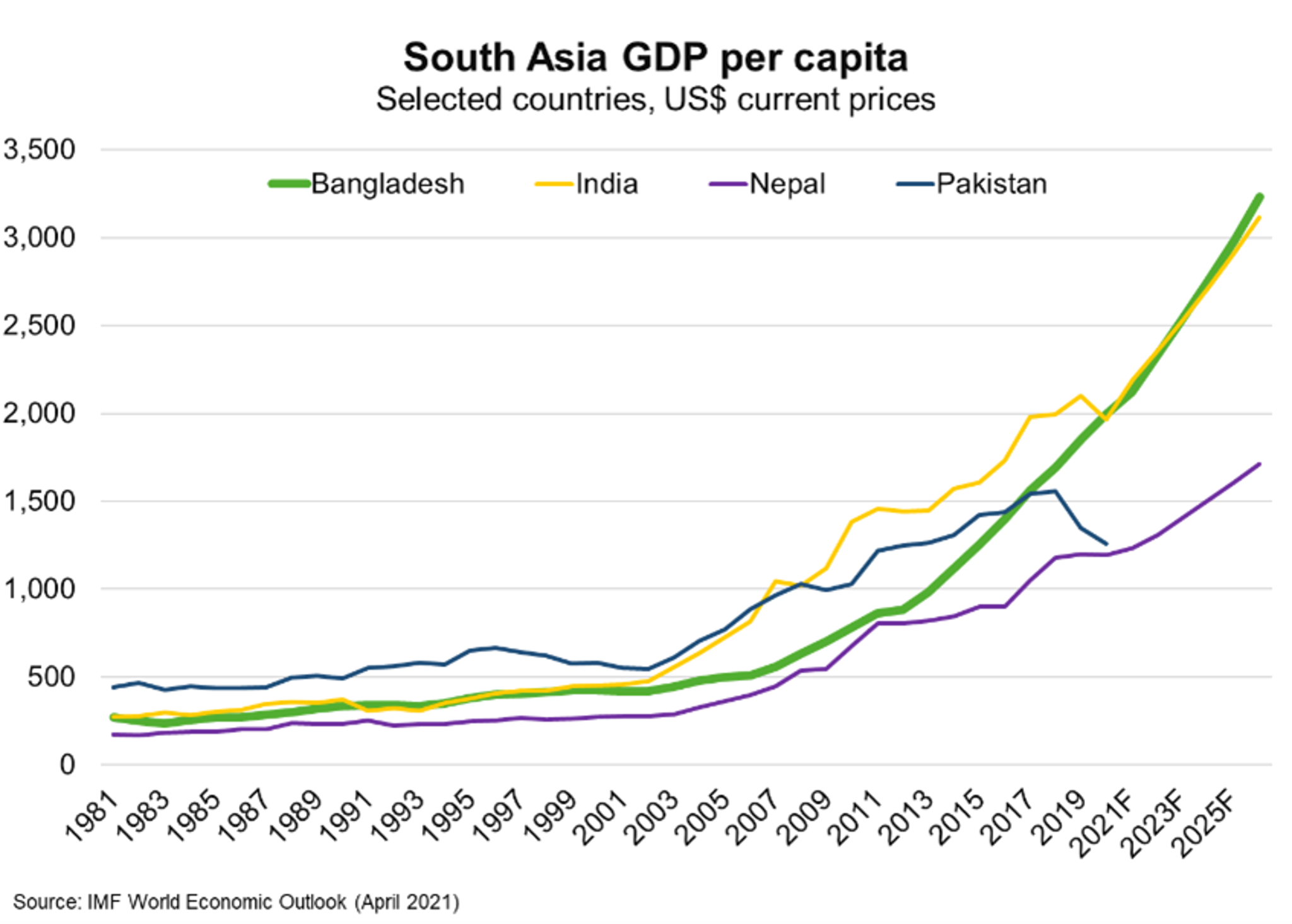Bangladesh—Strong economic performance but challenging outlook
Over the 50 years since independence from Pakistan, Bangladesh’s strong economic performance has lifted incomes beyond those in Pakistan and near to India (Chart). Extreme poverty rates—people earning less than US$1.90 per day—have declined from as high as 44% in 1991 to less than 14% in 2017. Social indicators also point to stronger health outcomes, lower mortality and greater education than some other South Asian neighbours. Before the COVID-19 pandemic, Bangladesh experienced faster economic growth (of 6.8% on average from 2010-2019) than neighbouring Pakistan, Nepal, Bhutan and Sri Lanka. Longer term, a youthful population and rising incomes should support greater private consumption. Ongoing investment in energy and infrastructure, supported by financing from multilateral banks and development partners, should enhance logistics and business competitiveness, and support continued GDP growth and social development.
But the outlook also faces multiple challenges. The pandemic has punctured economic momentum and reversed the country’s steady trend of poverty reduction over the past two decades, at least temporarily. Should there be fewer jobs overseas post-pandemic, that poses risks to future remittances inflows to support incomes and household consumption. Domestic political tensions also cast a shadow. The ruling Awami League’s overwhelming parliamentary majority and rivalry with opposition parties could contribute to ongoing political conflict. Centralised decision-making could make future policy responses unpredictable. Moreover, weak institutional settings, infrastructure deficiencies, perceptions of corruption and high incidence of violence could undermine already-low levels of foreign direct investment. The security situation has improved in recent years, although the threat of domestic security incidents, protests and terrorist attacks lingers. Although these factors have not been overly disruptive to economic growth in the past, they pose significant downside risks to the outlook.
Bangladesh is Australia’s 27th largest export partner, taking $1.45 billion in exports in 2019-20, consisting predominantly of vegetables, dairy, wheat and cotton.

